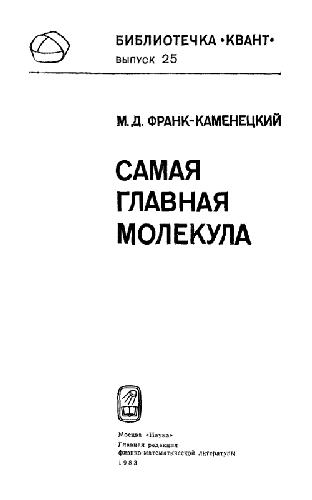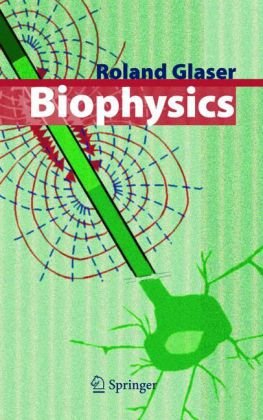Michael F. Ashby0750661682, 9780750661683
Table of contents :
cover.jpg……Page 1
Front Matter……Page 2
Acknowledgements……Page 5
Features of the Third Edition……Page 6
Preface……Page 4
Table of Contents……Page 0
Table of Contents……Page 8
1. Introduction……Page 14
1.2 Materials in Design……Page 15
1.3 The Evolution of Engineering Materials……Page 17
1.4 Case Study: The Evolution of Materials in Vacuum Cleaners……Page 19
1.5 Summary and Conclusions……Page 21
2. The Design Process……Page 23
2.2 The Design Process……Page 24
2.3 Types of Design……Page 28
2.4 Design Tools and Materials Data……Page 29
2.5 Function, Material, Shape, and Process……Page 31
2.6 Case Study: Devices to Open Corked Bottles……Page 32
2.7 Summary and Conclusions……Page 36
3. Engineering Materials and their Properties……Page 39
3.2 The Families of Engineering Materials……Page 40
3.3 The Definitions of Material Properties……Page 42
3.4 Summary and Conclusions……Page 55
4. Material Property Charts……Page 57
4.2 Exploring Material Properties……Page 58
4.3 The Material Property Charts……Page 62
5. Materials Selection – The Basics……Page 74
5.1 Introduction and Synopsis……Page 75
5.2 The Selection Strategy……Page 76
5.3 Attribute Limits and Material Indices……Page 80
5.4 The Selection Procedure……Page 88
5.5 Computer-Aided Selection……Page 94
5.6 The Structural Index……Page 97
5.7 Summary and Conclusions……Page 98
6. Materials Selection – Case Studies……Page 100
6.2 Materials for Oars……Page 101
6.3 Mirrors for Large Telescopes……Page 105
6.4 Materials for Table Legs……Page 109
6.5 Cost: Structural Materials for Buildings……Page 112
6.6 Materials for Flywheels……Page 116
7. Processes and Process Selection……Page 121
7.1 Introduction and Synopsis……Page 122
7.2 Classifying Processes……Page 123
7.3 The Processes: Shaping, Joining, and Finishing……Page 126
7.4 Systematic Process Selection……Page 141
7.5 Ranking: Process Cost……Page 148
7.6 Computer-Aided Process Selection……Page 155
7.8 Summary and Conclusions……Page 161
8. Process Selection Case Studies……Page 164
8.2 Forming a Fan……Page 165
8.3 Fabricating a Pressure Vessel……Page 168
8.4 An Optical Table……Page 172
8.5 Economical Casting……Page 175
8.6 Computer-Based Selection: A Manifold Jacket……Page 177
8.7 Computer-Based Selection: A Spark Plug Insulator……Page 180
8.8 Summary and Conclusions……Page 182
9. Multiple Constraints and Objectives……Page 183
9.1 Introduction and Synopsis……Page 184
9.2 Selection with Multiple Constraints……Page 185
9.3 Conflicting Objectives, Penalty-Functions, and Exchange Constants……Page 189
9.4 Summary and Conclusions……Page 198
Appendix: Traditional Methods of Dealing with Multiple Constraints and Objectives……Page 200
10. Case Studies – Multiple Constraints and Conflicting Objectives……Page 204
10.2 Multiple Constraints: Con-Rods for High-Performance Engines……Page 205
10.3 Multiple Constraints: Windings for High-Field Magnets……Page 209
10.4 Conflicting Objectives: Casings for a Mini-Disk Player……Page 215
10.5 Conflicting Objectives: Materials for a Disk-Brake Caliper……Page 219
10.6 Summary and Conclusions……Page 224
11. Selection of Material and Shape……Page 225
11.1 Introduction and Synopsis……Page 226
11.2 Shape Factors……Page 227
11.3 Microscopic or Micro-Structural Shape Factors……Page 238
11.4 Limits to Shape Efficiency……Page 243
11.5 Exploring and Comparing Structural Sections……Page 247
11.6 Material Indices that Include Shape……Page 249
11.7 Co-Selecting Material and Shape……Page 254
11.8 Summary and Conclusions……Page 256
12. Selection of Material and Shape: Case Studies……Page 259
12.1 Introduction and Synopsis……Page 260
12.2 Spars for Man-Powered Planes……Page 261
12.3 Ultra-Efficient Springs……Page 264
12.4 Forks for a Racing Bicycle……Page 268
12.5 Floor Joists: Wood, Bamboo or Steel?……Page 270
12.6 Increasing the Stiffness of Steel Sheet……Page 273
12.7 Table Legs Again: Thin or Light?……Page 275
12.8 Shapes that Flex: Leaf and Strand Structures……Page 277
12.9 Summary and Conclusions……Page 279
13. Designing Hybrid Materials……Page 280
13.1 Introduction and Synopsis……Page 281
13.2 Filling Holes in Material-Property Space……Page 283
13.3 The Method: “A + B + Configuration + Scale”……Page 287
13.4 Composites: Hybrids of Type 1……Page 289
14. Hybrid Case Studies……Page 299
14.2 Designing Metal Matrix Composites……Page 300
14.3 Refrigerator Walls……Page 302
14.4 Connectors that do not Relax their Grip……Page 304
14.5 Extreme Combinations of Thermal and Electrical Conduction……Page 306
14.6 Materials for Microwave-Transparent Enclosures……Page 309
14.7 Exploiting Anisotropy: Heat Spreading Surfaces……Page 311
14.8 The Mechanical Efficiency of Natural Materials……Page 313
15. Information and Knowledge Sources for Design……Page 320
15.1 Introduction and Synopsis……Page 321
15.2 Information for Materials and Processes……Page 322
15.3 Screening Information: Structure and Sources……Page 326
15.4 Supporting Information: Structure and Sources……Page 328
15.5 Ways of Checking and Estimating Data……Page 330
15.6 Summary and Conclusions……Page 334
16. Materials and the Environment……Page 336
16.2 The Material Life Cycle……Page 337
16.3 Material and Energy-Consuming Systems……Page 338
16.4 The Eco-Attributes of Materials……Page 341
16.5 Eco-Selection……Page 346
16.6 Case Studies: Drink Containers and Crash Barriers……Page 352
16.7 Summary and Conclusions……Page 354
17. Materials and Industrial Design……Page 357
17.2 The Requirements Pyramid……Page 358
17.3 Product Character……Page 360
17.4 Using Materials and Processes to Create Product Personality……Page 363
17.5 Summary and Conclusions……Page 372
18. Forces for Change……Page 374
18.2 Market-Pull and Science-Push……Page 375
18.3 Growing Population and Wealth, and Market Saturation……Page 381
18.4 Product Liability and Service Provision……Page 382
18.5 Miniaturization and Multi-Functionality……Page 383
18.6 Concern for the Environment and for the Individual……Page 384
18.7 Summary and Conclusions……Page 386
Appendix A: Useful Solutions to Standard Problems……Page 388
Introduction and Synopsis……Page 389
A.1 Constitutive Equations for Mechanical Response……Page 390
A.2 Moments of Sections……Page 392
A.3 Elastic Bending of Beams……Page 394
A.4 Failure of Beams and Panels……Page 396
A.5 Buckling of Columns, Plates, and Shells……Page 398
A.6 Torsion of Shafts……Page 400
A.7 Static and Spinning Disks……Page 402
A.8 Contact Stresses……Page 404
A.9 Estimates for Stress Concentrations……Page 406
A.10 Sharp Cracks……Page 408
A.11 Pressure Vessels……Page 410
A.12 Vibrating Beams, Tubes, and Disks……Page 412
A.13 Creep and Creep Fracture……Page 414
A.14 Flow of Heat and Matter……Page 416
A.15 Solutions for Diffusion Equations……Page 418
Appendix B: Material Indices……Page 422
B.2 Uses of Material Indices……Page 423
Appendix C: Data and Information for Engineering Materials……Page 428
C.1 Names and Applications: Metals and Alloys……Page 429
C.2 Names and Applications: Polymers and Foams……Page 430
C.3 Names and Applications: Composites, Ceramics, Glasses, and Natural Materials……Page 431
C.4 Melting Temperature, T_m, and Glass Temperature, T_g^l……Page 433
C.5 Density, Rho……Page 435
C.6 Young’s Modulus, E……Page 437
C.7 Yield Strength, Sigma_y, and Tensile Strength, Sigma_ts……Page 439
C.8 Fracture Toughness (Plane-Strain), K_1C……Page 441
C.9 Thermal Conductivity, Lambda……Page 443
C.10 Thermal Expansion, Alpha……Page 445
C.11 Approximate Production Energies and CO_2 Burden……Page 447
C.12 Environmental Resistance……Page 449
Appendix D: Information and Knowledge Sources for Materials and Processes……Page 451
D.2 Information Sources for Materials……Page 452
D.3 Information for Manufacturing Processes……Page 466
D.4 Databases and Expert Systems in Software……Page 467
D.5 Additional Useful Internet Sites……Page 468
D.6 Supplier Registers, Government Organizations, Standards and Professional Societies……Page 469
Appendix E: Exercises……Page 471
E.1 Introduction to the Exercises……Page 472
E.3 Use of Material Selection Charts……Page 473
E.4 Translation: Constraints and Objectives……Page 476
E.5 Deriving and Using Material Indices……Page 479
E.6 Selecting Processes……Page 488
E.7 Multiple Constraints and Objectives……Page 493
E.8 Selecting Material and Shape……Page 501
E.9 Hybrid Materials……Page 508
D……Page 513
J……Page 514
M……Page 515
P……Page 516
W……Page 517







Reviews
There are no reviews yet.